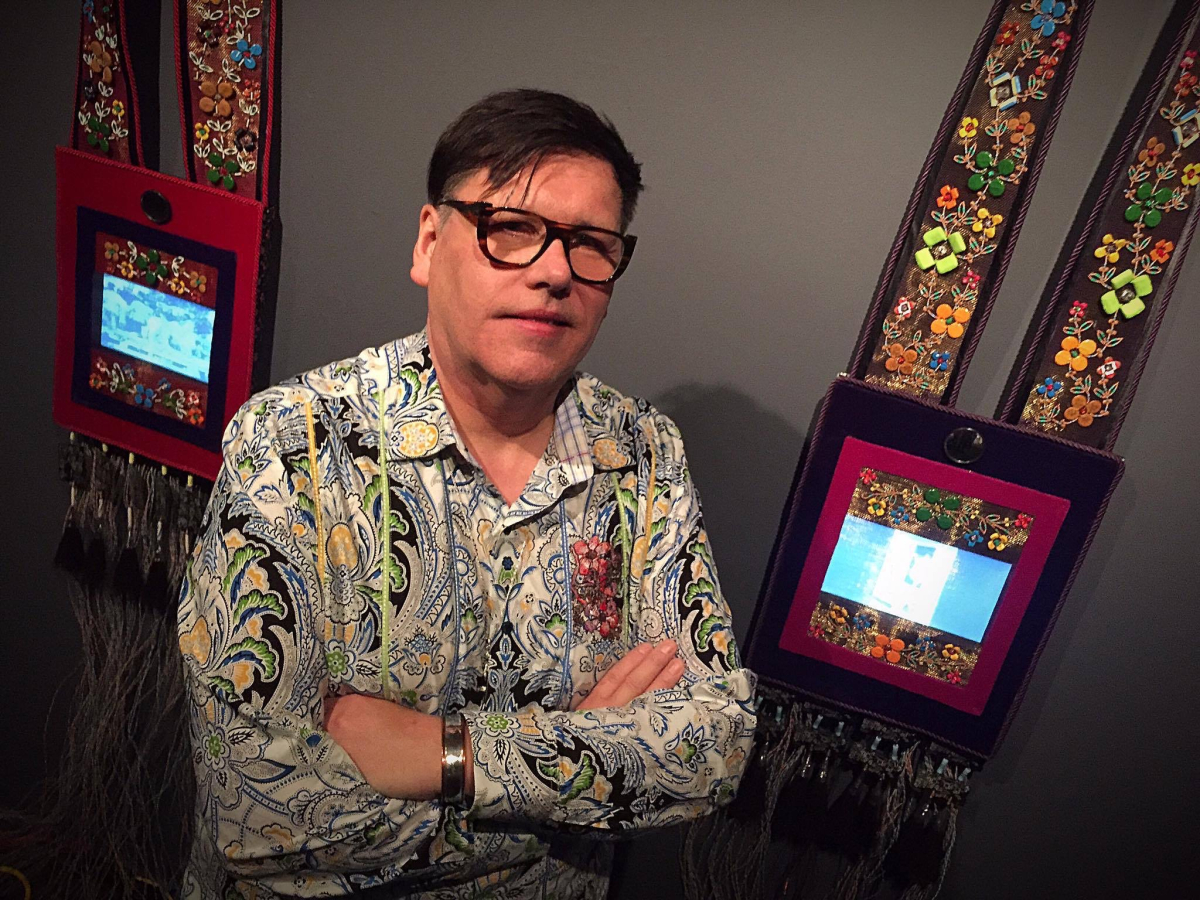In Canada Council for the Arts’ new exhibit Looking the World in the Face, the so-called ‘other’ gazes back at you

For years, the Canadian art world was unrepresentative of the country: the work of white artists, mostly men, amassed in art collections and on museum walls.
But those works don’t reflect the makeup of Canada or exemplify the wide array of art being created by non-white, non-male artists
A new exhibition at the Canada Council for the Arts space on Elgin Street in Ottawa called Looking the World in the Face sheds that one-dimensional view.
It is filled with faces of people and figures who are often so-called “otherized,” says curator Amin Alsaden.
The exhibition begins with a piece by Norval Morriseau and moves chronologically to works by other artists produced in the past year.
Indigenous artists represent around a third of the exhibition, including Inuit artists and artists from a diversity of First Nations.
“I think it speaks to the presence of Indigenous artists in Canadian art,” Amy Jenkins, head of the Canada Council’s Art Bank, says.
The art is varied and diverse based on each artist’s cultural tradition and experiences. The works span from Haida masks to powwow dancers, and from South Asian children on a paper route to a Black woman donning a mask made of tropical fruit.
“You’re looking at a microcosm of the complexity and diversity of the world,” Alsaden told Canada’s National Observer.
Barry Ace, an Ottawa-based artist and debendaagzijig (citizen) of M’Chigeeng First Nation, is one of those artists in the exhibition.
His canvas Cashing In is part of a series called Super Phat Nish. It features his character Super Phat Nish standing in for Batman and explaining pop culture’s never-ending consumerism to Robin.

Done in the mid-2000s, the series is a play on pop art, reminiscent of Andy Warhol’s work on consumer culture. It was born of a time when Ace was working directly with Indigenous youth in southern Manitoba.
“I really felt at that particular time [that] a lot Indigenous youth, especially urban Indigenous youth, did not have the opportunity to see themselves reflected in pop culture,” Ace says.
The work, centres the character of Super Phat Nish on canvases, old-fashioned butter boxes depicting a Pocahontas stand-in, and finger skateboards with braided, shirtless skateboarders on decals.
It’s a subversive work that plays on and reappropriates harmful stereotypes, Ace says.

The series uses street vernacular, stereotypes and the historical stories of Nanabush, an Anishinaabe trickster, he says.
“Using these stereotypes is a way of diffusing them in a way.”
The exhibition as a whole allows for a conversation between the artists and a diversity of artists pushed to the margins, Alsaden says.
Each work is a demand for these faces to be seen on their own terms, Alsaden adds.
“It dawned on me that being seen and acknowledged can be the first step towards belonging, and a foundation for equality,” Alsaden writes in his curatorial essay.

“But when certain society members are marginalized and even oppressed, insisting on being seen becomes an act of defiance,” he adds.
Alsaden approached many of the artists and had them write their labels for their pieces, ensuring the artist’s self-possession of their work.
It’s a statement exhibition that provides the Canada Council an opportunity to celebrate the collection while evaluating the collecting practice of the Art Bank, Jenkins says.
Matteo Cimellaro / Local Journalism Initiative / Canada’s National Observer







Comments